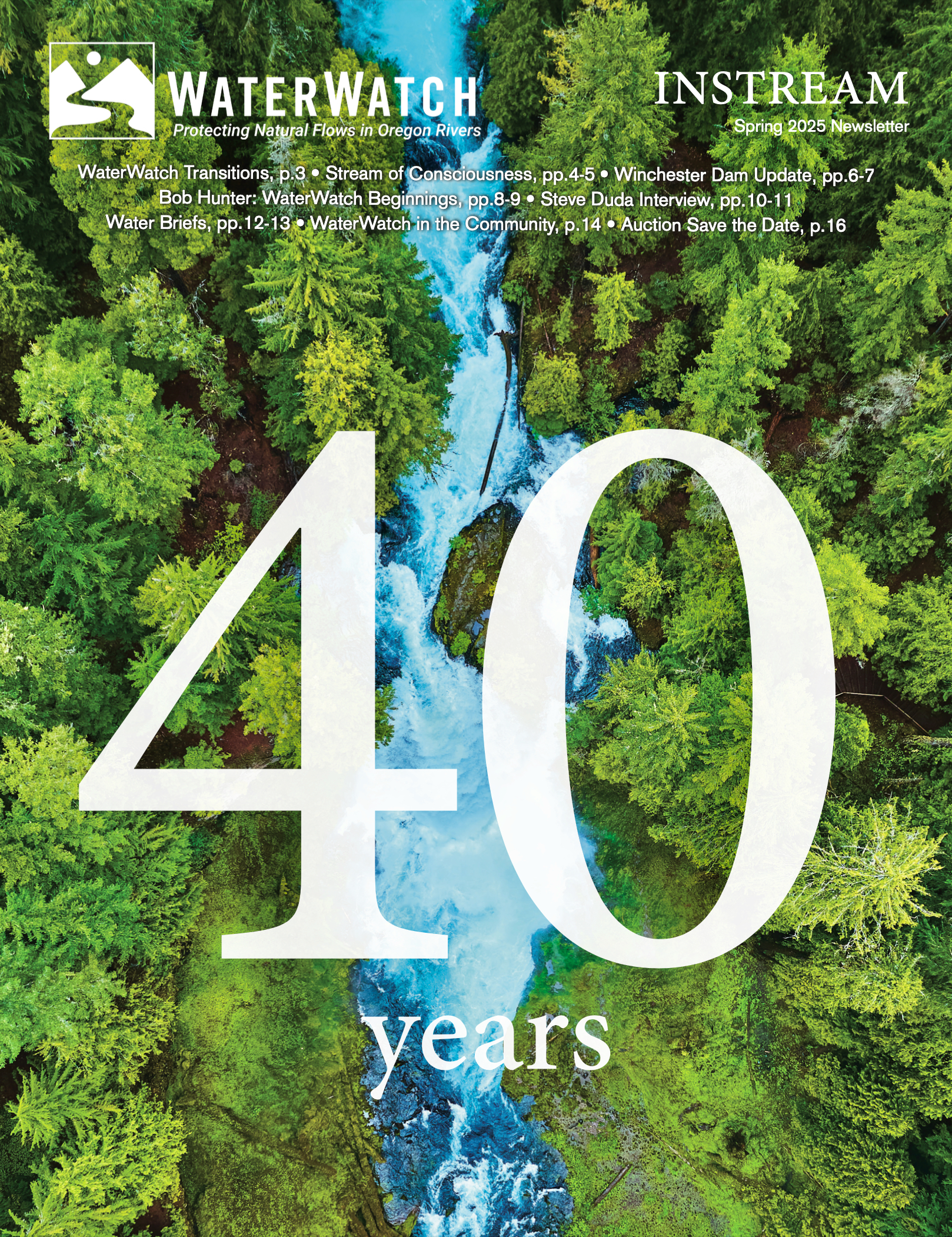By Kimberley Priestley
An unintended regulatory loophole in Oregon’s water transfer laws allow old water rights to serve new uses, move to new diversion points, or change the place of use without any environmental review, effectively nullifying Oregon’s ability to protect instream values on hundreds of streams across the state.
Currently, transfer applicants only need to show that a proposed water right change won’t harm other water rights or lead to an increase in use. As a result, on the hundreds of stream reaches across Oregon that don’t have established water rights to protect fish, wildlife, and recreation, the Oregon Water Resources Department can’t consider the effect of these proposed transfers on instream values, even if a transfer would completely drain a fish bearing stream.
To address this ecologically harmful loophole, the Oregon Water Partnership brought what is now SB 427 to the 2025 legislative session. If passed, SB 427 would protect Oregon’s streams by establishing a new “no diminishment of flow” standard in Oregon’s transfer review statutes.
Because most of Oregon’s streams are over-appropriated most months of the years and aquifers are declining across the state, more and more extractive water users are turning to transfers to fuel new use. As reliance on water right transfers grow, the need to address this gap in the law becomes more pressing.
A Feb. 25th hearing on the bill in the Senate Natural Resources and Wildfire Committee saw 300 people submit written testimony in support of SB 427. Thank you to our WaterWatch members for showing up for this!
As the bill winds its way through Salem we’ll update you on its progress, and ultimate result, in our 2025 legislative round-up this summer.
This article originally appeared in the spring 2025 issue of WaterWatch of Oregon’s Instream newsletter.


